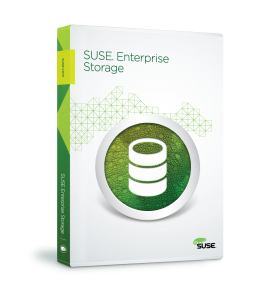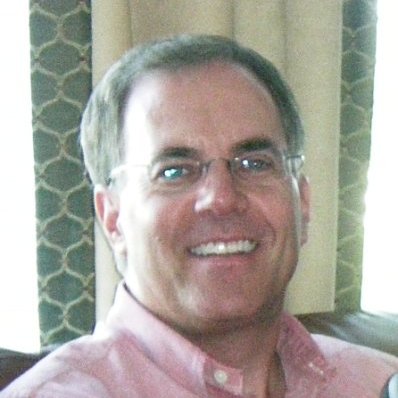Software Defined Storage Trajectory and SUSE
 All of the analysts are predicting big things from Software Defined Storage (SDS) over the next several years. In fact, some analysts are even predicting some very hard times for some of the traditional storage vendors. This is all based on the tremendous pushback that is occurring against expensive, proprietary hardware based arrays and moving enterprise customers towards commodity (and thus interchangeable) components.
All of the analysts are predicting big things from Software Defined Storage (SDS) over the next several years. In fact, some analysts are even predicting some very hard times for some of the traditional storage vendors. This is all based on the tremendous pushback that is occurring against expensive, proprietary hardware based arrays and moving enterprise customers towards commodity (and thus interchangeable) components.
There are some vendors who started to work in the space with SDS solutions early on. The biggest drawback with these solutions, is that while they move the hardware to more common, off-the-shelf gear, the software and interfaces are STILL proprietary in nature. Having worked for a storage company in the past, I know they will tout the benefits of their proprietary technology and interfaces and their tremendous experience in the space. These are all valid points. However, they cannot get away from one inescapable fact; their solution is STILL proprietary, and open source will rapidly catch up and pass their capabilities.
Being experienced in leading the open source and Linux industries across some evolutionary changes in the past (Linux on IBM Mainframe, x86_64, XFS, OpenStack, btrfs, etc), SUSE decided to step in and help the industry adopt software defined storage. The biggest key? Making sure it is TOTALLY open source and thus preventing a technology lock-in. As things mature, I am sure there will be some proprietary technologies that can add value here and there, especially things like infiniband stacks. However, the key is that the choice belongs to the customer to make use of the proprietary technology; it is not a requirement.
 SUSE’s venture into the space started over 18 months ago when we announced at SUSECon that we would be launching SUSE Enterprise Storage in the future. We had already picked up experience by shipping Ceph as a technical preview in SUSE Cloud 2. This started a journey down the path that led to the release of the 1.0 product using Ceph Firefly earlier this year. The first task? Make sure it packages and installs well and is supportable. With SUSE Enterprise Storage 1.0, this mission was accomplished.
SUSE’s venture into the space started over 18 months ago when we announced at SUSECon that we would be launching SUSE Enterprise Storage in the future. We had already picked up experience by shipping Ceph as a technical preview in SUSE Cloud 2. This started a journey down the path that led to the release of the 1.0 product using Ceph Firefly earlier this year. The first task? Make sure it packages and installs well and is supportable. With SUSE Enterprise Storage 1.0, this mission was accomplished.
I can easily say this, as I am working on a number of projects that utilize SUSE Enterprise Storage and have stood up 10+ different cluster configs in my home lab alone. What I see an opportunity for is helping the enterprise consume this product easier: make the installation process better; make it more supportable; and provide solid reference architectures and sizing rules that guide against the creation of hardware starved infrastructure.
This is the point where there are a number of efforts underway within SUSE. Some are mine, others owned by our Senior Product Manager, Larry Morris, or by Lars Marowsky-Brée, our Distinguished Engineer, who is leading an incredible team of brilliant engineers. These efforts will start to materialize with our version 2 product due later this year, and will help make sure that enterprise customers can more easily consume the incredible technology that Ceph offers without needing a computer science degree.
If you want to get an idea of how important it is to SUSE to make open source consumable to the enterprise, check out SUSE OpenStack Cloud. SUSE has won every Rule the Stack competition due to our ability to rapidly deliver a deployed and supportable OpenStack cloud.
I mentioned our product leads above because I think it is important to understand the depth of SUSE’s experience in mission critical enterprise infrastructure. Below you will find a little about Larry and Lars.
 Larry Morris came to SUSE with a tremendous amount of history with HP’s StorageWorks team. This includes several different engineering director positions in storage product development, storage product test, storage product support and storage technical strategy. His long experience (20+ years) working on enterprise storage products and strategy has embedded the needs and requirements businesses have for a real storage product into his genes. Larry approaches the challenge of making a PhD project a product with all of his knowledge, experience and passion, which I believe is critical to success.
Larry Morris came to SUSE with a tremendous amount of history with HP’s StorageWorks team. This includes several different engineering director positions in storage product development, storage product test, storage product support and storage technical strategy. His long experience (20+ years) working on enterprise storage products and strategy has embedded the needs and requirements businesses have for a real storage product into his genes. Larry approaches the challenge of making a PhD project a product with all of his knowledge, experience and passion, which I believe is critical to success.
 Lars has been with SUSE for 15 years. Having spent many years working on our industry leading HA stack, and having co-developed and patented several important technologies for resilient architectures, Lars knows what it means to build a supportable and stable solution. His expertise is deep and wide and his passion for open source solutions is second to none. When I work with Lars, he digs deep to understand the question or concern and then applies his knowledge and deep technical skills as a software engineer and the broad experience of a solution engineer to direct the research or answer down the best path. With Lars, we have a steady and experienced hand in engineering making sure we solve the challenge in the right way while giving our customers the best solution for the long term.
Lars has been with SUSE for 15 years. Having spent many years working on our industry leading HA stack, and having co-developed and patented several important technologies for resilient architectures, Lars knows what it means to build a supportable and stable solution. His expertise is deep and wide and his passion for open source solutions is second to none. When I work with Lars, he digs deep to understand the question or concern and then applies his knowledge and deep technical skills as a software engineer and the broad experience of a solution engineer to direct the research or answer down the best path. With Lars, we have a steady and experienced hand in engineering making sure we solve the challenge in the right way while giving our customers the best solution for the long term.
In the future, I will be posting some additional articles that outline some guidelines and reference architectures we develop with partners here at SUSE. Keep your eyes peeled and feel free to contact anyone at SUSE (including me) for more information.
Related Articles
Jun 14th, 2024
No comments yet